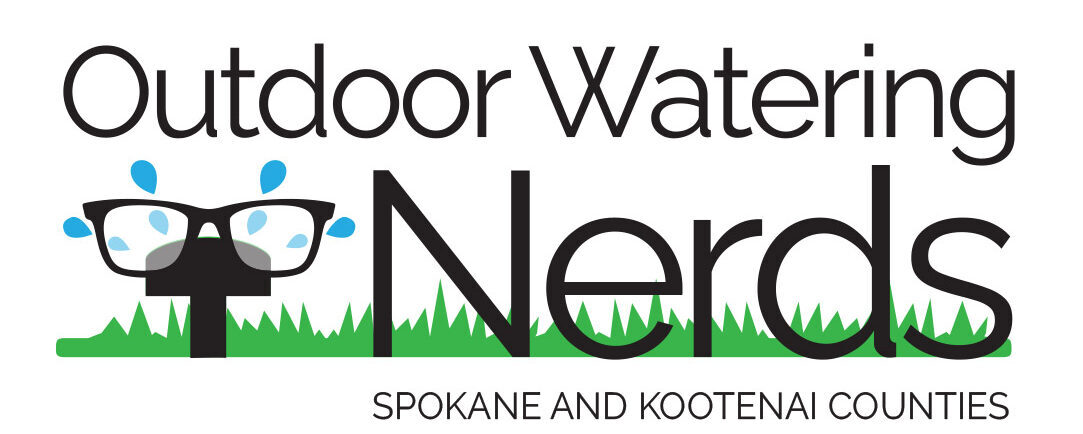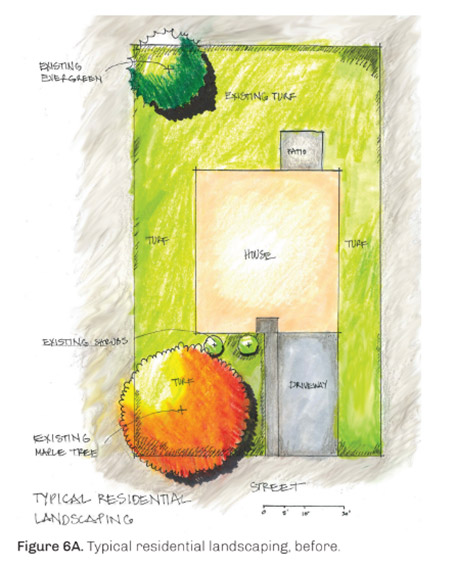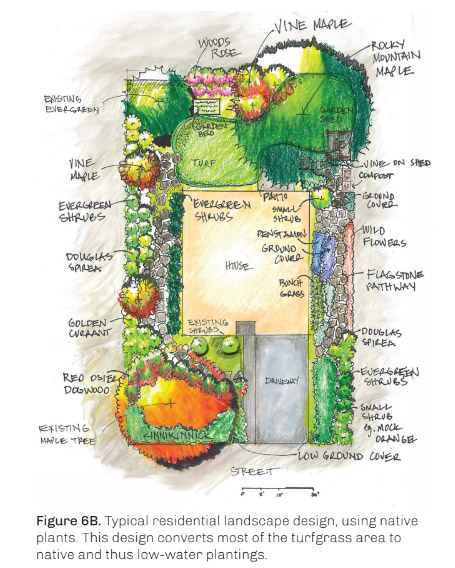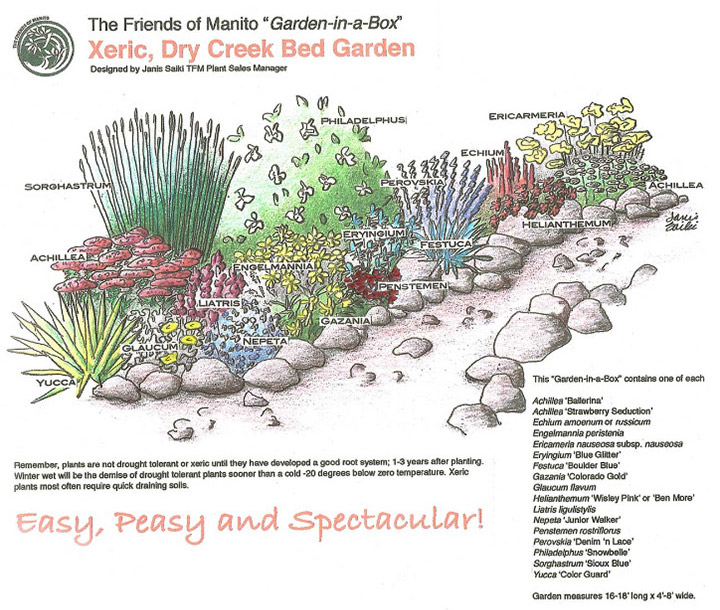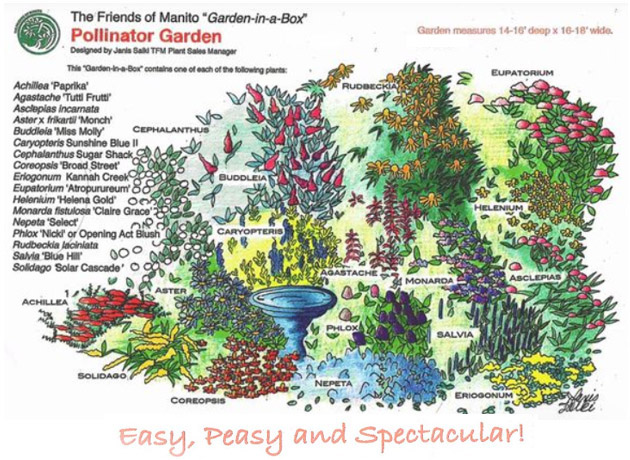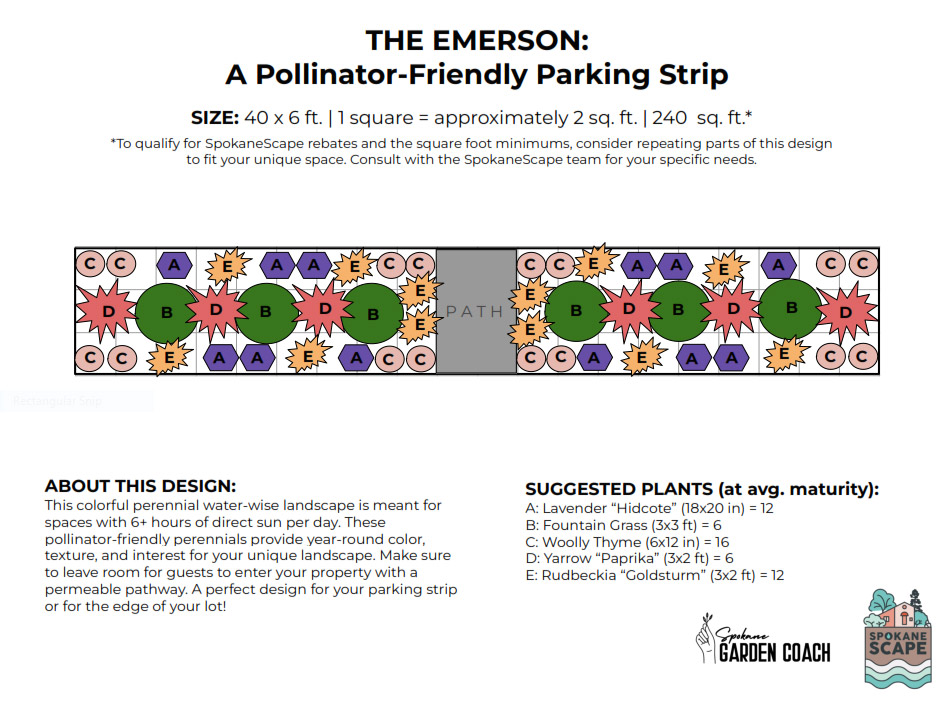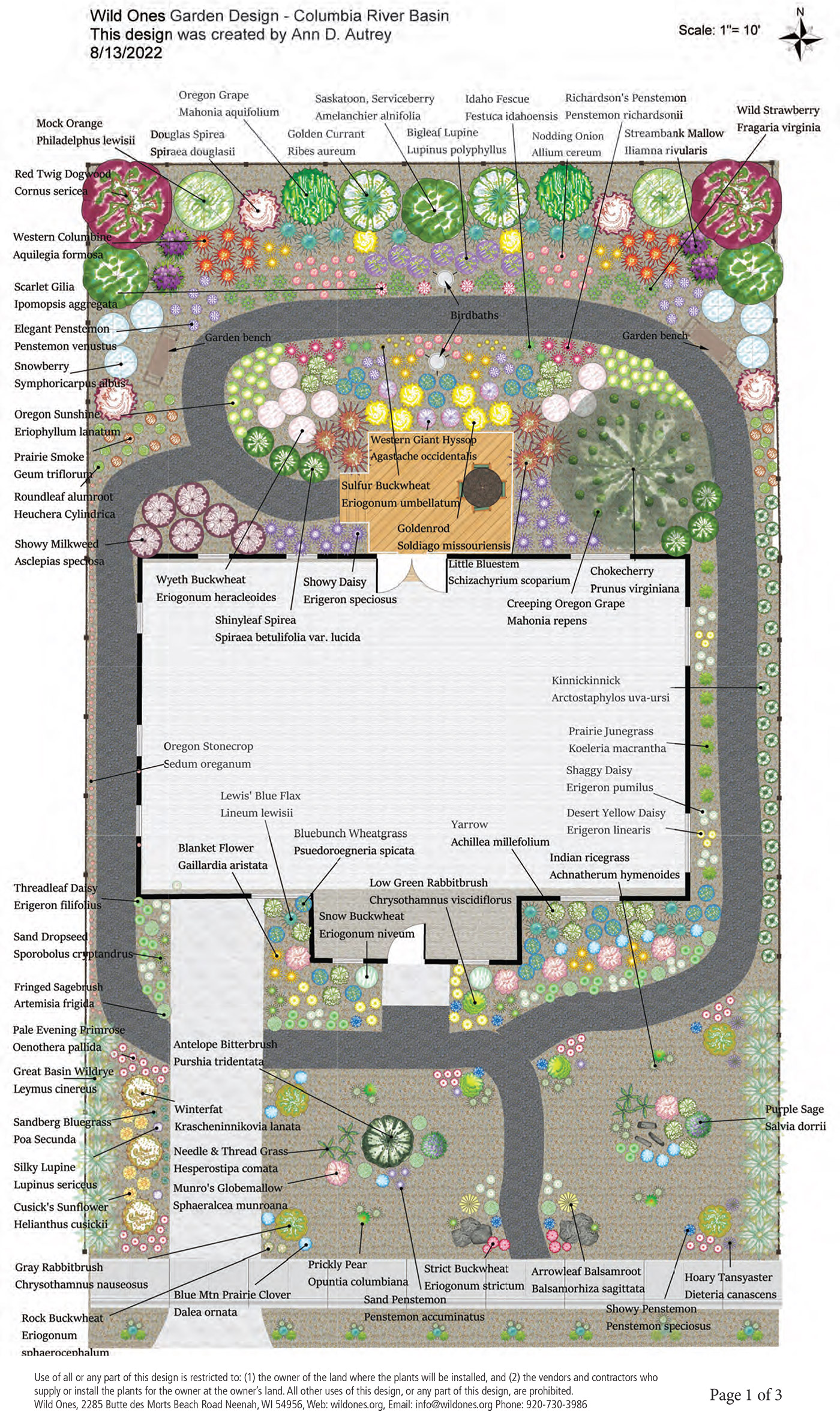Sample Designs & Resources
Thousands of landscape design books are available in libraries and online. The Nerds focus is on how landscape design can support water conservation. In this section you will find design ideas and resources specifically for the Kootenai Spokane Inland Empire. Have fun adapting these ideas to make your yard beautiful and water efficient.
University of Idaho Extension Native Plant Landscaping: Curb Appeal & Low Water Use
University of Idaho Extension – The before and after sketches below are part of a UI Extension publication titled, “Native Plant Landscaping: Curb Appeal and Low Water Use.” Authors Jim Ekins and Iris Mayes feature 5 native plants and where they might fit your landscape design and water conservation plans. A Native Plant Design Checklist is included along with a variety of suggested readings.
Friends of Manito
Friends of Manito is a nonprofit organization that supports Manito Park’s 98 acres of gardens, playgrounds, open space and walking trails. Manito Park is a regional treasure in the heart of Spokane.
SpokaneScape
SpokaneScape has approved five designs templates prepared by the Spokane Garden Coach. The Emerson, The Browne, The Manito, The Perry, and The Downriver. These designs are effective to save water no matter where you live in the Kootenai Spokane Region. Use or adapt these designs for your yard.
Wild Ones Columbia River Basin Design
Wild Ones designs landscapes for specific climates across the USA. On the website the project is shown in phases with colorful photos of the plant list.
- The first phase, the mulch, basalt features, and pathways.
- The second phase is the planting of shrubs and trees.
- The third phase of the garden construction is the planting of the tall, larger wildflowers, shrubs, and grasses that are in front of the shrubs. Xeric plants in the front yard are also added.
- The fourth phase fills in more of the backyard and some of the plants by the front door.
- The final phase of the garden construction would be the last of the smaller wildflowers.
Resources
UI Master Gardeners Program
UI Master Gardener Handbook Chapter 16 Landscaping
Wild Ones Native Plants Natural Landscapes
Outdoor Webinar Series
WaterSense and the Alliance for Water Efficiency are coordinating to hold outdoor water use webinars that are focused on outdoor water use. All webinars are recorded for on-demand viewing.
WaterSense and EPA Resources
- Learn the basics of water-smart landscape design (PDF)(14 pp, 2.33 MB, About PDF).
- Learn more about how landscapes can benefit from microirrigation with WaterSense guides for irrigation professionals or homeowners.
- Find out how Your Yard Can Be Greener (PDF) (4 pp, 615 K, About PDF) with EPA’s abbreviated guide for water–smart landscapes.
- Find out how to reduce your pool’s water consumption with the WaterSense pool water efficiency guide.
- Best management practices on outdoor water use for large landscapes can also be found in WaterSense at Work.
- EPA’s Soak up the Rain program has information on how to use stormwater practices that can also create sustainable, water-smart landscapes.
- EPA’s Green Infrastructure program has information on stormwater practices that may align with water-efficiency goals at the site and community level.
- Visit the archived EPA GreenScapes website to learn what you can do to preserve natural resources while keeping your lawn and garden healthy.
EPA Partner Resources
- The Landscape for Life website, a collaboration between the Colorado State University Extension and U.S. Botanic Garden, has comprehensive information on creating a sustainable landscape.
- Alliance for Water Efficiency Resource Library for more information on outdoor water efficiency.
- American Society of Landscape Architects has resources on sustainable residential design.
- San Diego’s Sustainable Landscape Guidelines provide best practices for a watershed approach to landscaping and can be useful for other parts of the country.
- U.S. Golf Association’s Golf’s Use of Water Resource Center for information about how golf facilities and golfers can support more sustainable use of water resources.
